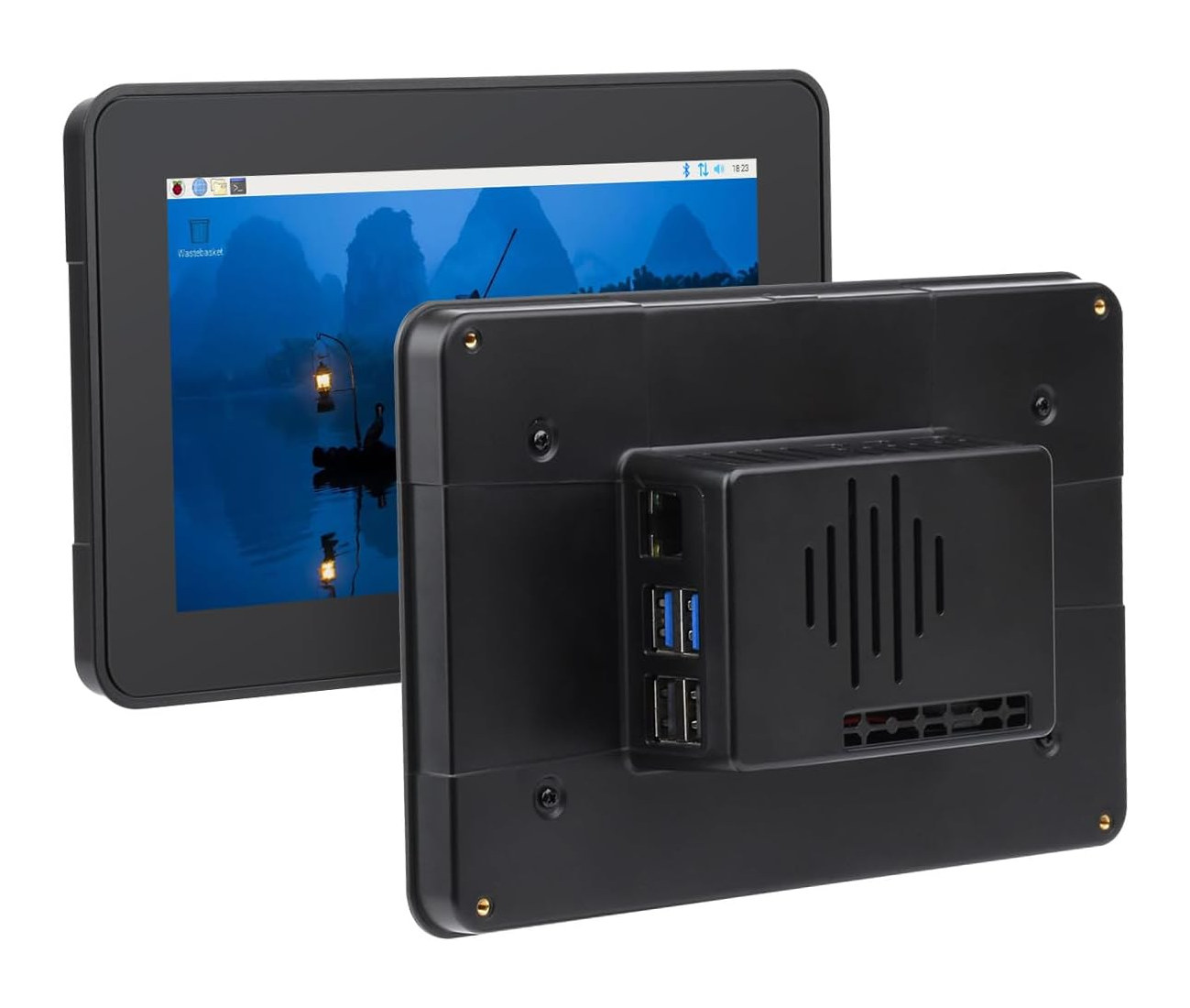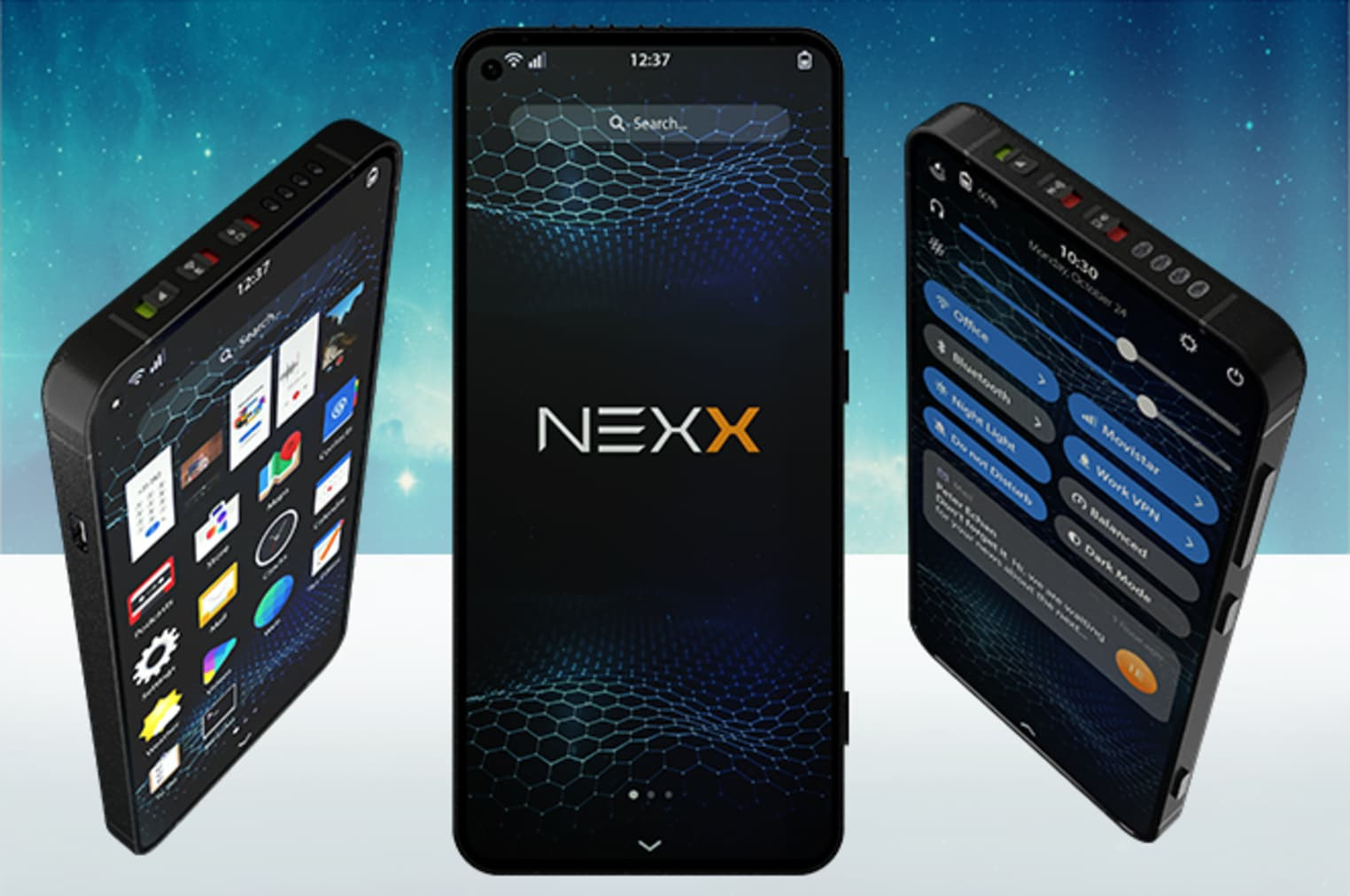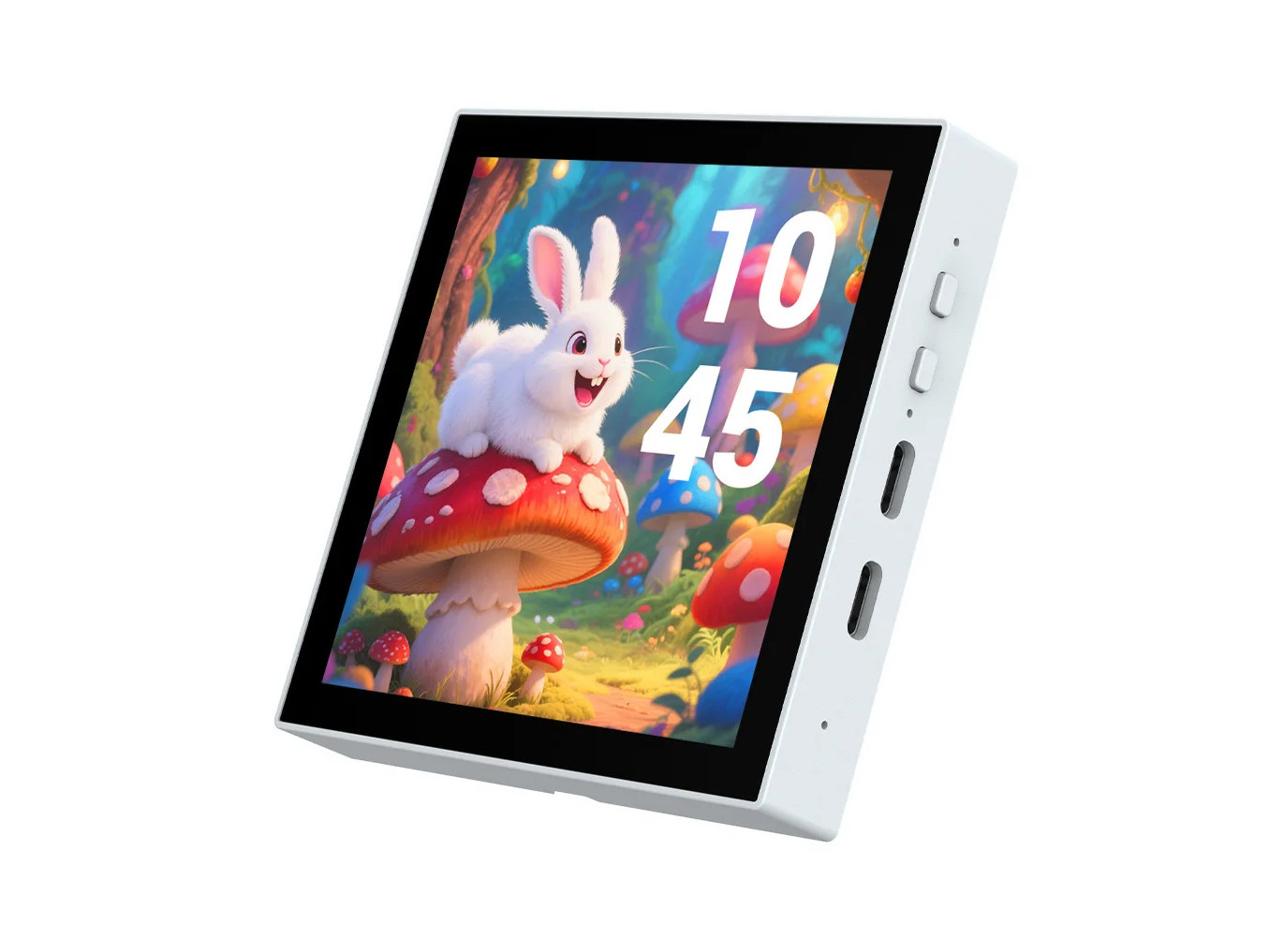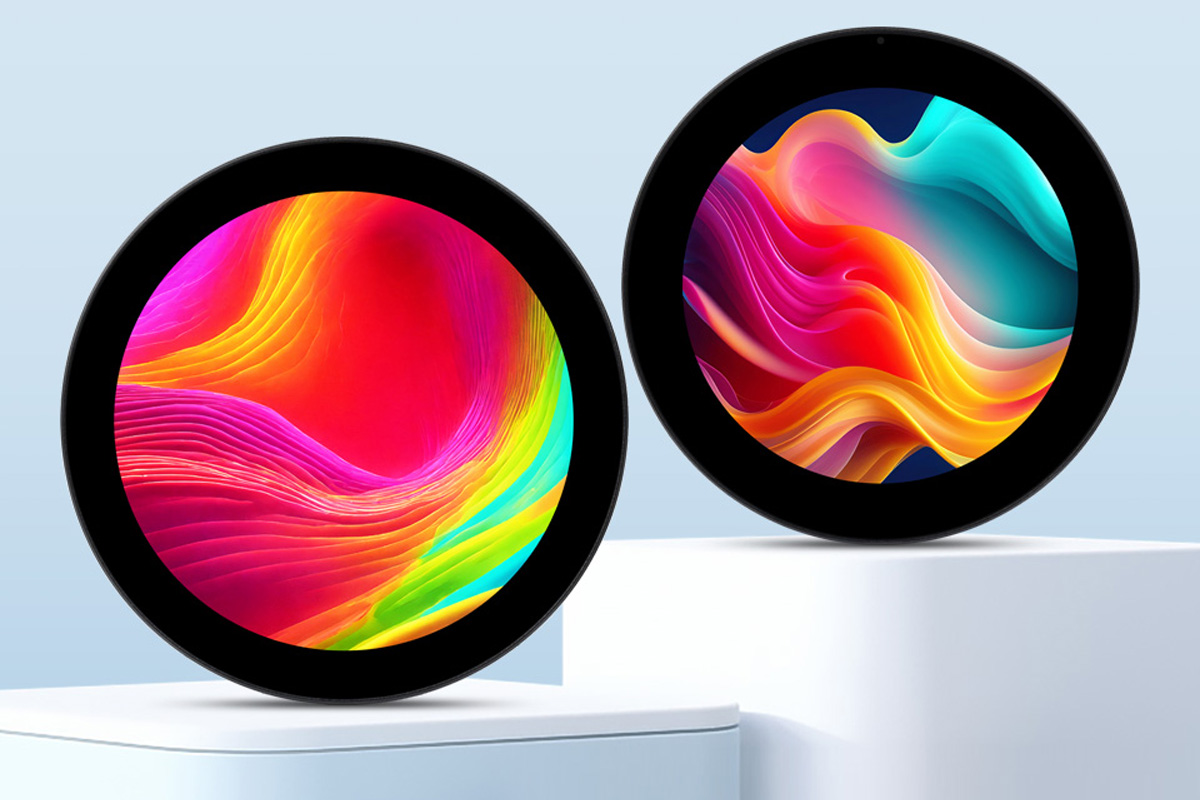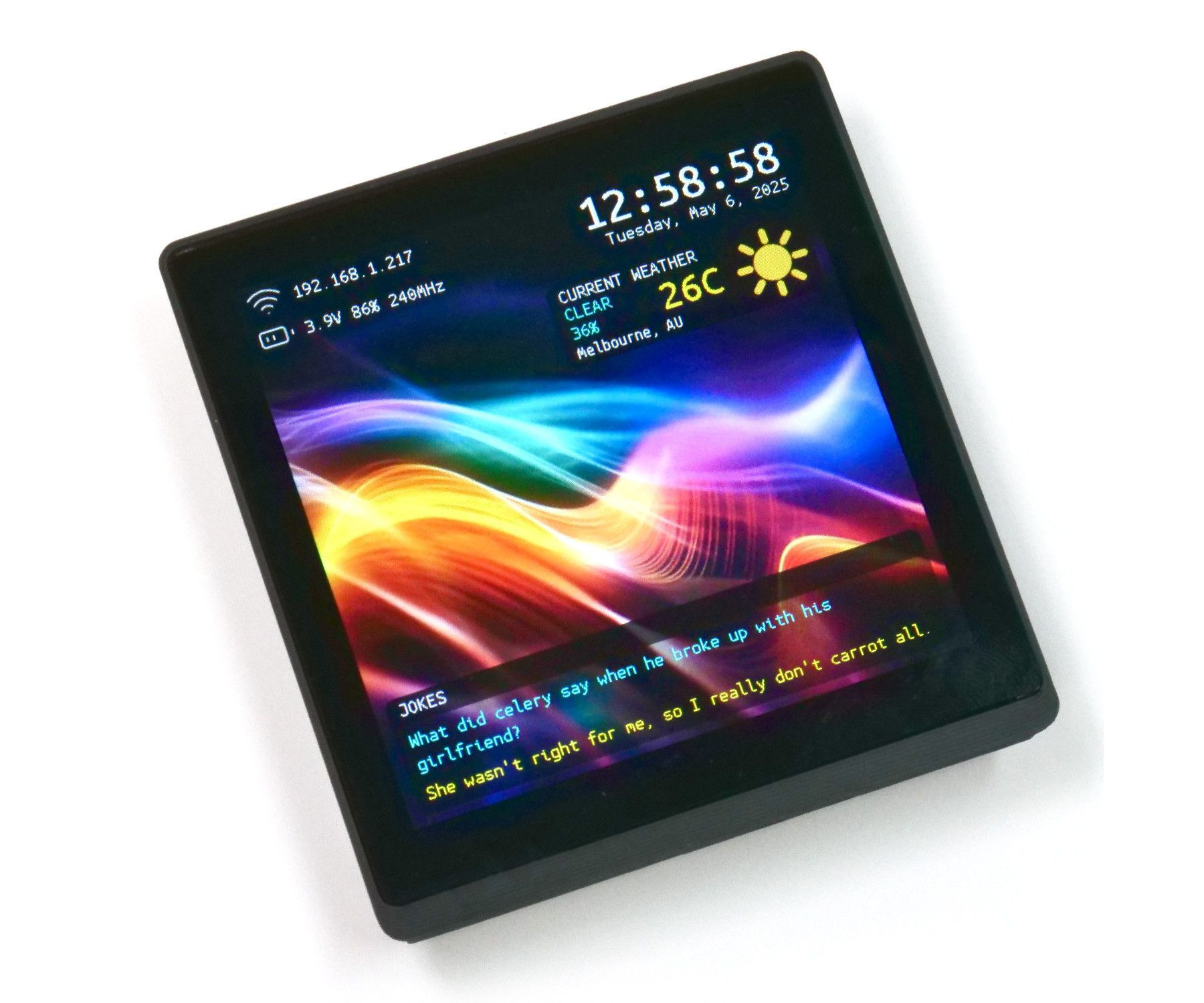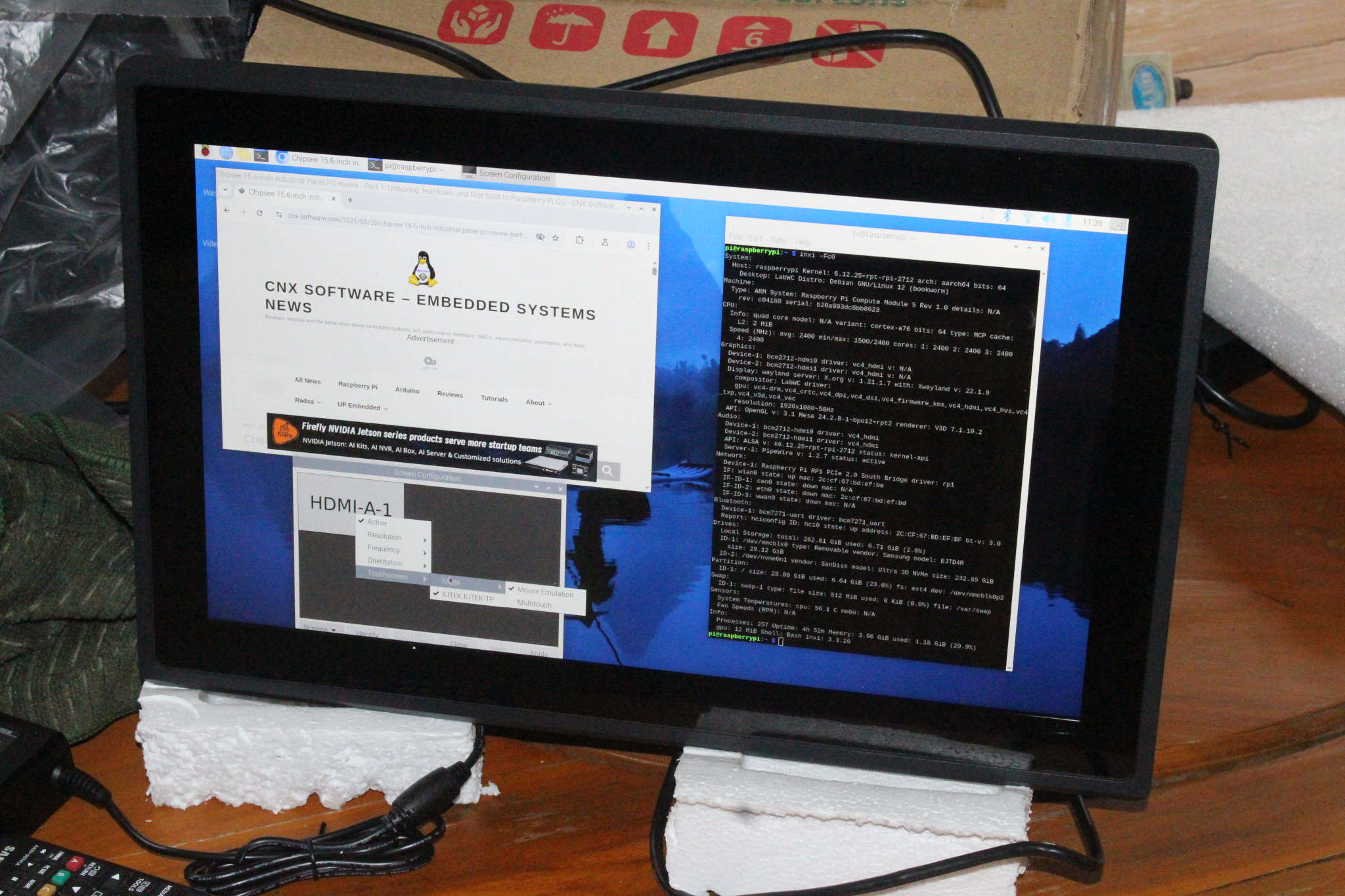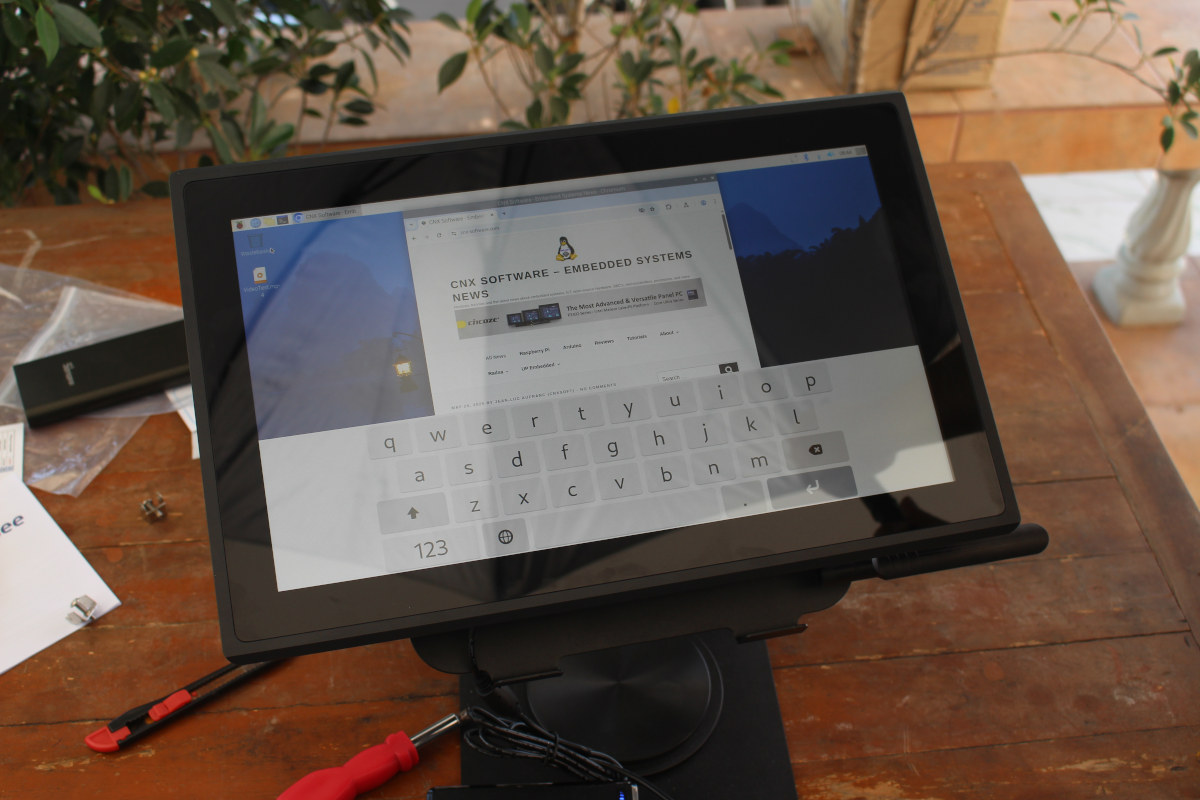When I used the Raspberry Pi Touch Display 2 with a Raspberry Pi 4 as part of the Raspberry Pi AI camera review, I just placed the kit on a smartphone stand, but it was somewhat awkward and not super stable. Waveshare has now introduced the PI5-CASE-TD2 protective case for the 7-inch Raspberry Pi Touch Display 2 and the Raspberry Pi 5 that neatly combines the two, and also supports mounting to standard tripods. The company also claims it works with some other 7-inch displays. The enclosure gives access to all main ports of the Raspberry Pi 5, including Gigabit Ethernet, the four USB ports, the 40-pin GPIO header for Raspberry Pi HATs, the PCIe FFC connector, micro HDMI ports, the power button, and the USB-C port for power. I initially thought it would be compatible with the Raspberry Pi 4 too, but since the USB ports and Ethernet ports […]
Liberux NEXX is a Linux smartphone with Rockchip RK3588S, 32GB RAM, 6.34-inch OLED (Crowdfunding)
Liberux NEXX is a Linux smartphone powered by a Rockchip RK3588S octa-core Cortex-A76/A55 processor coupled with 32 GB LPDDR4x and a 512GB eMMC flash, as well as a 6.34-inch 2400×1080 OLED display. We’ve seen other Linux smartphones in the past with the most popular likely being the Purism Librem 5 and Pine64’s PinePhone Pro. However, those are showing their age with older NXP i.MX 8M and Rockchip RK3399 SOCs, and the Liberux NEXX brings much-needed performance with a Rockchip RK3588S and 32GB of RAM, enabling mobile/desktop convergence to an extent. Liberux NEXX specifications: SoC – Rockchip RK3588S CPU – Octa-core processor with 4x Cortex-A76 cores @ up to 2.4 GHz, 4x Cortex-A55 cores @ up to 1.8 GHz GPU – Arm Mali-G610 GPU with OpenGL ES 3.2, OpenCL 2.2, and Vulkan 1.2 support VPU – 8Kp60 video decoder for H.265/AVS2/VP9/H.264/AV1 codecs, 8Kp30 H.265/H.264 video encoder AI accelerator – 6 TOPS NPU […]
ESP32-P4 Smart 86 Box features 4-inch square touch display for Smart Home and IIoT applications
Designed for Smart Home or industrial IoT (IIoT) applications, Waveshare’s ESP32-P4 Smart 86 Box is equipped with a 4-inch square touchscreen display, an ESP32-C6 module with WiFi 6 and Bluetooth connectivity, and a range of connectors. Two models are offered: the ESP32-P4-WIFI6-Touch-LCD-4B with a MIPI CSI camera connector and a 28-pin GPIO header, and the ESP32-P4-86-Panel-ETH-2RO with a bottom board that features an RS485 serial interface, two relays, a 10/100Mbps Ethernet RJ45 connector, and 6V-30V DC input. ESP32-P4 Smart 86 Box specifications: Main module – ESP32-P4-Core Module Microcontroller – ESP32-P4NRW32 MCU Dual-core RISC-V microcontroller @ 400 MHz with AI instructions extension and single-precision FPU Single-RISC-V LP (Low-power) MCU core @ up to 40 MHz GPU – 2D Pixel Processing Accelerator (PPA) VPU – H.264 and JPEG codecs support Memory – 768 KB HP L2MEM, 32 KB LP SRAM, 8 KB TCM, 32MB PSRAM Storage – 128 KB HP ROM, 16 […]
ESP32-P4 development board features 3.4-inch or 4-inch round IPS touchscreen display
Waveshare ESP32-P4-WIFI6-Touch-LCD-3.4C and ESP32-P4-WIFI6-Touch-LCD-4C ESP32-P4-based development boards feature a 3.4-inch and a 4-inch round IPS display, respectively, a 10-point capacitive touchscreen, and a wide 170° viewing angle. They also integrate two microphones with echo cancellation for voice AI applications and offer Wi-Fi 6 and Bluetooth 5 (LE) connectivity via an ESP32-C6 module. Designed for AIoT and HMI projects, the boards also include USB ports, a camera connector, a speaker connector, and a microSD card slot. Target applications include Smart Home control panels, voice-controlled interfaces, digital dashboards, indoor environmental monitoring, PC performance monitoring, and other secure IoT and edge computing applications. Waveshare ESP32-P4-WIFI6-Touch-LCD-3.4C/4C specifications Main module – ESP32-P4-Core Module Microcontroller – ESP32-P4NRW32 MCU Dual-core RISC-V microcontroller @ 400 MHz with AI instructions extension and single-precision FPU Single-RISC-V LP (Low-power) MCU core @ up to 40 MHz GPU – 2D Pixel Processing Accelerator (PPA) VPU – H.264 and JPEG codecs support Memory – […]
Battery-powered SQUiXL devkit pairs 4-inch touchscreen display with ESP32-S3 WiFi and Bluetooth SoC
Unexpected Maker’s SQUiXL is a battery-powered ESP32-S3 WiFi and Bluetooth IoT controller and development platform with a 4-inch touchscreen display with 480×480 resolution. Designed for makers, hardware engineers, embedded developers, and home automation enthusiasts, the SQUiXL integrates with 8MB PSRAM and a 16MB SPI flash for plenty of resources for the firmware. Other features include a microSD card, an amplifier with speaker connector, a haptic driver and motor, an RTC, and a STEMMA/Qt connector for expansion. SQUiXL specifications: WiSoC – Espressif Systems ESP32-S3 CPU – Dual-core Tensilica LX7 @ up to 240 MHz with vector instructions for AI acceleration Memory – 512KB RAM Wireless – 2.4 GHz WiFi 4 and Bluetooth 5.0 LE + Mesh Memory – 8MB octal PSRAM Storage 16MB QSPI flash MicroSD card slot (multiplexed with audio amplified) Display – 4-inch 480×480 RGB display with capacitive touch (GT911) Audio MAX98357A I2S Audio Amplifier (multiplexed with microSD card […]
Chipsee PPC-CM5-156 Review – Part 2: A Raspberry Pi CM5 fanless Panel PC tested with Raspberry Pi OS
We’ve already had a look at the hardware of Chipsee’s 15.6-inch industrial touch panel PC in the first part of the review, before booting it to Raspberry Pi OS. I’ve now had time to test most features of the PPC-CM5-156 panel PC running Raspberry Pi OS, so I’ll report my experience testing performance and most ports of the Raspberry Pi CM5-based system in the second part of the review.
PPC-CM5-156 panel PC system info and sbc-bench.sh benchmark
Let’s check the features of the PPC-CM5-156 panel PC using the inxi utility:
Chipsee 15.6-inch industrial Panel PC review – Part 1: Unboxing, teardown, and first boot to Raspberry Pi OS
I’ve just received a review sample of Chipsee PPC-CM5-156 15.6-inch industrial panel PC that was recently added to the Raspberry Pi CM5-based Chipsee panel PCs family we covered in February with 7-inch and 10-inch models. I’ll do a two-part review starting by listing the specifications, doing an unboxing and a teardown, and booting the system in the first part, before doing further testing with Raspberry Pi OS and most interfaces and features in the second part. Chipsee PPC-CM5-156 specifications SoM – Raspberry Pi CM5 or CM5 Lite with Broadcom BCM2712 quad-core Cortex-A76 SoC, 2GB, 4GB, or 8GB RAM, optional 16GB, 32GB, or 64GB eMMC flash Storage MicroSD card slot M.2 M-Key 2230/2242/2260/2280 (PCIe Gen2 x1) socket for NVMe SSD Display – 15.6-inch IPS display with 1920×1080 resolution, 10-point capacitive touchscreen with 1mm armored glass, 400 cd/m2 brightness Video Output – HDMI 2.0 port up to 4Kp60 Audio 3.5mm audio out […]
Huawei Matebook Pro is the first laptop sold with HarmonyOS operating system
Huawei Matebook Pro (HAD-W24 / HAD-W32) resembles a typical laptop with a 14.2-inch display, 24GB to 32GB RAM, and 1TB or 2TB SSD storage. What’s less common is that the processor is not named, and the laptop is the first to run Huawei’s HarmonyOS operating system. Those two are due to Western countries’ sanctions against the Chinese company. Huawei used to sell Intel-based laptops with Windows and Android smartphones, but they’ve not made hardware based on US technology for a while. As software support would eventually run out, they had to work on an alternative named HarmonyOS, which has been used on smartwatches, smartphones, and tablets for a while, but the Matebook Pro is the first computer sold with the new OS. While we don’t know the processor used, reports mention the Kirin X90 10-core (4+4+2) / 20-thread Arm SoC as an “Apple Silicon” solution. MateBook Pro specifications: SoC – […]


